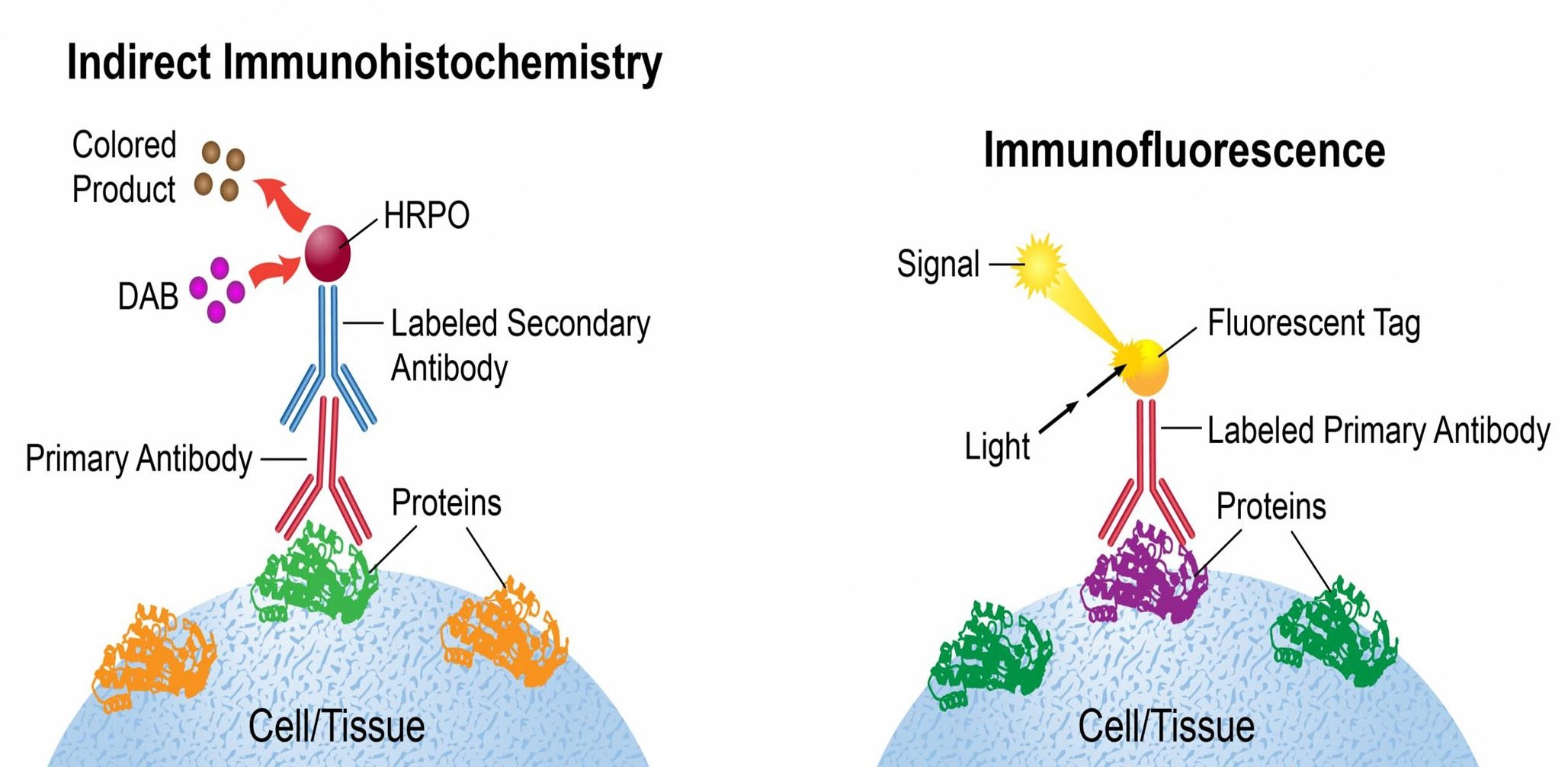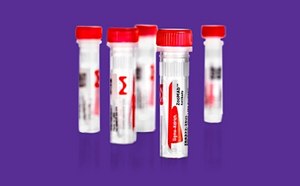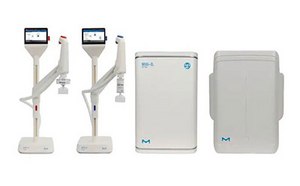Immunohistochemistry

Immunohistochemistry (IHC) and Immunofluorescence (IF) Detection Methods
Immunohistochemistry (IHC) is a biochemical method that uses antibodies that bind to specific antigens in a section of tissue. Similarly, immunocytochemistry (ICC) is suitable for identifying antigens in individual cell layers. IHC is commonly used to visualize proteins, carbohydrates, and lipids of interest in both healthy and diseased tissues, such as those found in cancerous tumors. Specific molecular markers are characteristic of cellular events such as proliferation or cell death (apoptosis). IHC is also widely used in basic research to understand the distribution and localization of biomarkers and differentially expressed proteins in different parts of biological tissue.
Featured Categories
Experience ZooMAb® recombinant antibodies, engineered for exceptional consistency and performance in various applications
Milli-Q® systems offer innovative water purification technologies engineered to support lab research needs, sustainability goals, and other major requirements.
IHC Tissue Preparation, Antigen Retrieval and Pretreatment
Typically, tissues are fixed, embedded in paraffin, and sectioned for IHC analysis using a microtome. A significant step following the initial tissue preparation is the need for antigen retrieval. It is needed to break the protein cross-links formed during fixation and uncover hidden antigenic sites. Antigen retrieval and pretreatment conditions must be determined empirically, as the accessibility of the antigen epitope may vary significantly depending on numerous biological factors. For example, some antigens may require a more aggressive pretreatment in order to “unmask” their antibody-binding epitopes, while pretreatment may not be required at all for some antigens. Two common antigen retrieval pretreatment methods include Heat-Induced Epitope Retrieval (HIER) where a heat source is used in conjunction with buffers and enzymes (proteinase K). The second method, Proteolytic-Induced Epitope Retrieval (PIER) is another antigen retrieval method where various proteases may be used, such as proteinase k, trypsin, chymotrypsin or pepsin.
IHC Staining and Detection
Following tissue preparation and antigen retrieval pretreatment, visualizing the antibody-antigen interaction can be accomplished in a number of ways. One common method uses a primary antibody that is conjugated to an enzyme, such as horseradish peroxidase or alkaline phosphatase, that catalyzes a color-producing reaction. Alternatively, the immunofluorescence (IF) method uses an antibody that is tagged to a fluorophore, such as fluorescein, rhodamine, or Alexa Fluor. Another option is to use an unlabeled primary antibody, with indirect antigen detection by a labeled secondary antibody or more complex detection systems. In this case, the optimal titer of both the primary and secondary antibody should be determined for each assay.
Visit our document search for data sheets, certificates and technical documentation.
Related Articles
- NBT-BCIP substrate system aids in western blotting and immunohistological staining, producing a blue-purple insoluble end product.
- Using antibodies in the lab from selection, antibody concentration and antibody storage
- ZooMAb® Antibodies Frequently Asked Questions
- Sigma® Antibody Bioguarantee – Complete peace of mind with your antibody purchase. Exemplary scientific support and a full credit or replacment product if you ar not complete satisfied
- In the midst of beeping lab timers, presentations and grant deadlines, it is easy to take for granted the quality of lab reagents.
- See All (22)
Related Protocols
- Use this protocol to for the entire immunohistochemistry (IHC) procedure through staining and visualization of specific antigens in paraffin-embedded tissue sections.
- In the midst of beeping lab timers, presentations and grant deadlines, it is easy to take for granted the quality of lab reagents.
- Subcellular protein location often correlates with function; nucleus proteins implicated in gene regulation, mitochondria proteins in energy production.
- Prestige Antigens™ and the corresponding Prestige Polyclonals or Monoclonals are recommended to use according to the standard Prestige Antigen-blocking protocol
- Prestige Antibody Immunohistochemistry Procedure protocol using standardized tissue microarray slides for antibody validation.
- See All (7)
Find More Articles and Protocols
How Can We Help
In case of any questions, please submit a customer support request
or talk to our customer service team:
Email custserv@sial.com
or call +1 (800) 244-1173
Additional Support
- Chromatogram Search
Use the Chromatogram Search to identify unknown compounds in your sample.
- Calculators & Apps
Web Toolbox - science research tools and resources for analytical chemistry, life science, chemical synthesis and materials science.
- Customer Support Request
Customer support including help with orders, products, accounts, and website technical issues.
- FAQ
Explore our Frequently Asked Questions for answers to commonly asked questions about our products and services.
To continue reading please sign in or create an account.
Don't Have An Account?

